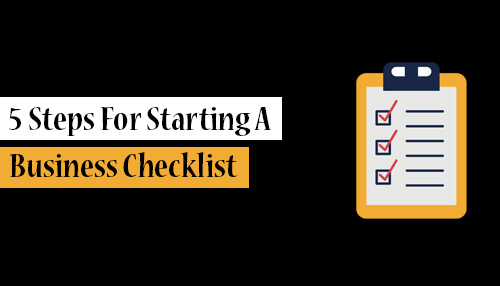Introduction
Market analysis will inform you if there is an opportunity to develop your idea into a profitable firm. It’s a chance to learn more about local firms that are already established and prospective clients. Find a competitive edge for your company using that information. In this article, we are going to talk about the 05 steps for starting a business checklist.
1. Prepare a business plan
The cornerstone of your company is its business plan. The financial plan serves as a guide for organizing, managing, and expanding your new company. You’ll use the financial plan to persuade people that cooperating with you or making an investment in your business is a sensible choice. Your company needs to have a distinct selling proposition that demonstrates how it differs from the competition. Additionally, it must have a well-defined target market and a concentrated service or product.
2. Start-up Costs: Finance your company
Every new firm must pay start-up costs before it can run and turn a profit. Building a customer base and maintaining a consistent cash flow typically takes time. Up to the point where the business can pay for day-to-day expenses, you will need funds to keep you going with the startup phase. Remember that success might not come right away.
With the aid of your business plan, you can determine how much money you’ll need to start your firm. You will have to raise money or borrow money if you don’t already have that much available. So, you must prepare a budget to meet the start-up costs.
3. Choose a location for your business entity
Among the most important choices, you’ll have to make is where to locate your business entity. The decisions you make when starting a physical store or an online store could have an impact on your taxes, regulatory requirements, and income.
4. Decide on a corporate structure
The corporate structure you select will affect your personal responsibilities, tax obligations, and company registration procedures. Choose whether your company will be a corporation, a partnership, or a sole proprietorship. Specific financial and tax document standards for enterprises are set forth by the Canada Revenue Agency. If you have staff, you’ll be responsible for more tasks.
Once you’ve chosen the ideal company name, it’s time to register it and safeguard your reputation. You must enroll with the federal government and possibly your state legislature if you conduct business under a name other than your own.
5. Auditing and Checking the Business Performance
Regularly check your actions and the environment where you operate for any changes that might have an impact on the health and profitability of your company. Your duty as an entrepreneur doesn’t end with your launch and initial sales. You must constantly expand your company if you want to turn a profit and stay afloat. You’ll need to put in some time and work, but your business will reward you for your efforts.
An excellent strategy to attain growth is to partner with more well-known brands in your sector. Make contact with other businesses and request some advertising in return for a free sample of a product or service. Join forces with a charitable organization and donate some of your time or goods to raise awareness of your brand.
Conclusion
There never is a perfect plan, even though these suggestions will help you establish your firm and make it ready to thrive. Despite your best efforts, something will almost surely go wrong while beginning a firm. You must adjust to shifting circumstances if you want to manage a successful firm.



